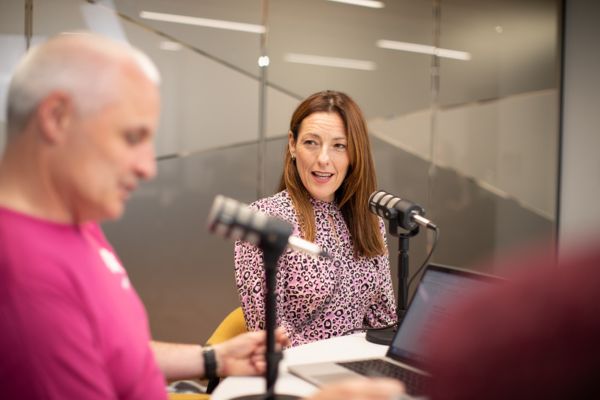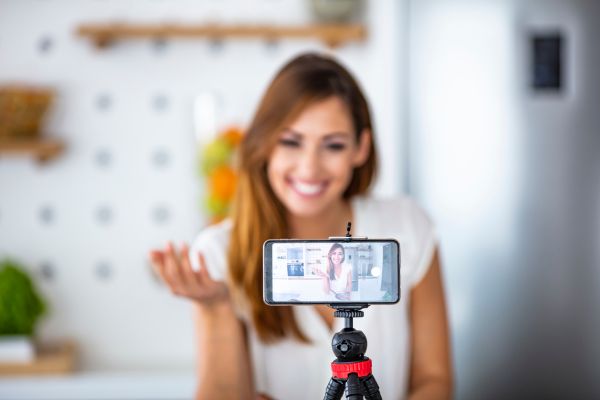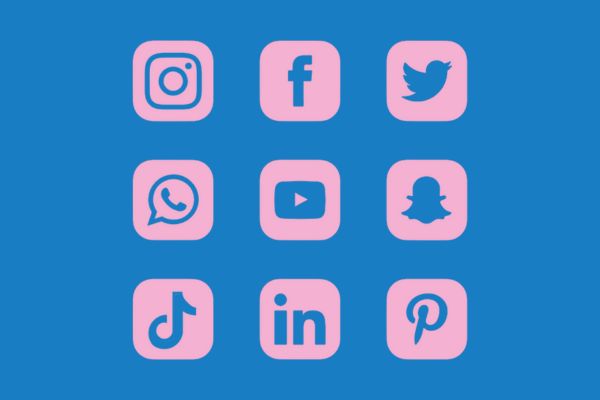
While all of the information from Google has to be taken on board while bearing in mind that they’re trying to get us to spend more – we always find the Think by Google content very useful – and hopefully you do too.
So here are those 3 trends – and what it means for you.
The article actually leads with a stat that 41% of Gen Z describe themselves as content creators but for me, the 18-44 year old figure is one that shows a trend that can benefit many more organosations.
Blurring the lines between creator and audience, this has some potential big benefits for organisations wanting to increase the amount of video content they produce.

Firstly, we all know the struggle that can be involved in trying to get our people to put their hands up and agree to feature in the content we’re trying to create.
This trend indicates that this job may get easier.
I’ve seen it myself at home with my own kids making videos of themselves playing football or basketball in the garden, creating TikToks or just being happy to record video messages to send to the family to mark birthdays or other special occasions.
That’s undoubtedly due to the time spent on channels like YouTube and the desire it creates for them to copy the behaviours of the people they admire.
For those outside the Gen Z category, it’s undoubtedly the case that we are also now a lot more comfortable creating video content than we ever have been. Whether it’s filming some footage at a concert that we’ve been to or filming the family when we’re on holiday, we’ve watched enough content from others to know what looks and sounds good.
That could make our job as marketers a lot easier when we’re trying to recruit volunteers for content for the organisations that we represent.
It will also make that content easier (and quicker) to produce as their experience (and comfort) on camera should lead to better quality content.
Of course, the quality will still be determined by the quality of the creative idea – but its execution should get easier.
Another big advantage in the rise of content creators is the opportunity that it offers for user generated content.
With more of our audience being more comfortable on camera (not to mention the rise of influencer marketing), this creates a great opportunity for us to get to a position where our customers are creating content for us.
It appears that not all screen time is bad.

There are very few video marketing projects that we are now involved with that don’t require us to produce video assets in a variety of different formats.
This isn’t simply creating a single asset in widescreen, square and vertical format but remixing the content and producing a range of different video assets for use on different platforms and at different stages of the customer buying journey.
This is a creative decision based on the evidence from Google about how to maximise the performance of video campaigns.
The variety of formats now available to us means that we get more opportunities to show up on the feeds of our audience than ever before.
Of course, the YouTube trends report focuses on the successes that creators have had with YouTube shorts content in partnership with their long form YouTube content, but the data about this trend can help to inform the decisions we make about the content and formats that we use across YouTube, Instagra,, Facebook and TikTok as well.

One example is Coincidental – a supplier of practice management software to dental practices.
We worked with them to create 4 long form customer success stories for use on their YouTube channel and embedding on their website.
We then used the interview content captured during this process to create an additional library of 40 short form videos in both widescreen and square format for use across their social media channels and as additional content for their YouTube channel (for use in YouTube advertising campaigns).
The library of short form content was created using some key sales messages to identify the content that would be most suitable:
One of the big concerns for anyone signing up for a new software like this is how painful the data conversion process will be.
It’s a bit like changing your bank – you’re not particularly fond of your current one, but the fear of all those direct debits falling over and the mortgage not getting paid next month makes you adopt the “better the devil you know” approach.
That’s a problem for Coincidental – so a series of short videos featuring customers talking about how easy the data conversion process was, is a good hook to get people interested as it removes one of the barriers to a sale.
Allowing people to sign in and out on an iPad when they arrive at the practice, automatically updates the patient records with details of the visit and removes a large amount of the admin burden from the practice team.
A big problem for dental practices is no-shows – where a patient does not show up for their appointment.
Coincidental has an automatic text reminder feature which sends a text message to patients a week before the visit asking them to coinfirm their attendance.
This leads to much more advance notice when a patient isn’t going to turn up for their appointment and allows the practice staff to fill that slot with another patient – maximising the productivity and revenue for the practice while also improving service levels.
By taking this approach, Coincidental now have a library of evergreen video content that speaks directly to their customer’s concerns.
The availability of these assets in large volumes and in a variety of formats ensures that they can reach their target audience wherever they are and keep reinforcing the positive experiences of their existing customers, helping to remove the obstacles to a sale that exist for potential new customers.
Ok – so it wound’t be a marketing article without some reference to AI.
The article states that AI is bsing used to “democratise video production.”
I’m not sure I agree with that – it implies that AI now means anyone can make great videos and I don’t think that is the case.

Where I do see a real benefit of AI is as a creative assistant in the ideation or brainstorming phase.
Whether that be trying to come up with a catchy name for a new video series, get yourself started with a video script for your product or service or create imagery to use in your video project.
There’s no doubt that AI can be a big help in all these areas and as the technology develops and we all learn more about how to use it to benefit of businesses its use will increase.
For the minute though, I’m not sure its the silver bullet that it’s sometimes portrayed as – I thoight that was supposed to be VR anyway?
There’s obviously a lot of excitement and anticipation any time a new technology becomes available and as usual there are those who will see it as a shortcut to getting stuff done, or a cheap way to create (bad) content rather than looking at how it can improve the products and services that we offer, improve how we interact with customers, improve service levels and generally build better businesses.
The fact of the matter is, the vast majority of us are already using tools powered by AI on a daily basis – largely to allow us to get functional tasks done.
On the marketing side, there’s a move to see how AI can be used to enhance creativity – and that’s a good thing.
If you’ve got this far I hope you’ve found that summary useful.
We’d love to hear your thoughts on the latest trends from the YouTube report in the comments.
If you’d like to read the article from Think by Google in full then you can find it here.